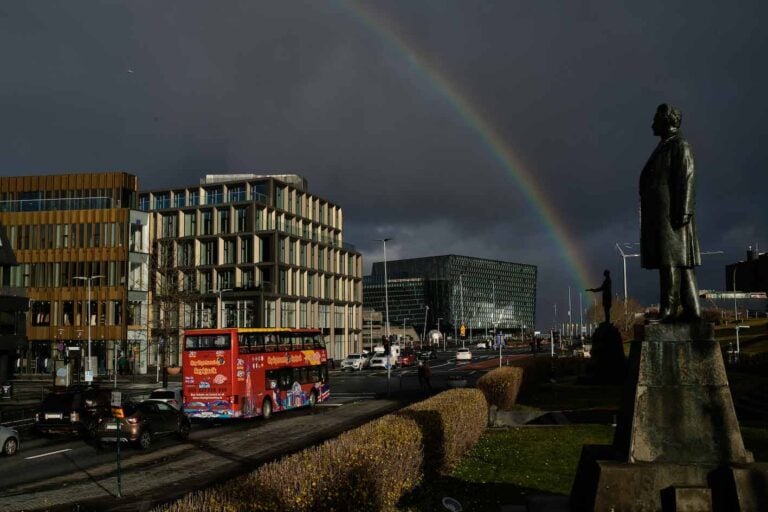In 1839, a citizen’s meeting in Reykjavík approved the construction of a road running south from Austurstræti towards the Tjörnin pond, along the creek flowing from Tjörnin to the sea. In 1848, this stretch was officially named Lækjargata. The creek was enclosed in a conduit in 1911, the road widened, and the bridges that had adorned it were removed. Lækjargata has seen more alterations than most streets in the city, although the buildings on its east side have been better preserved than in many other areas. Lækjartorg square, across from the Prime Minister’s Office, was also planned and named in 1848. At the corner of Austurstræti and Lækjargata stands one of the street’s oldest buildings, Lækjargata 2, built in 1852 as Reykjavík’s first corner building on a historically significant plot, being the first lot sold in the capital.
Lækjargata 2 burned down in 2007 and was rebuilt, larger and taller but in a similar style, the following year. Many notable buildings with historical, cultural, and political significance line Lækjargata, such as the Prime Minister’s Office, originally built as a prison between 1761 and 1771; the Reykjavík Junior College, built in 1846; and Bernhöftstorfa, constructed between 1834 and 1905. The newest addition is Hafnartorg, across from Arnarhóll, which was completed in 2020. Lækjargata spans 450 meters, running from Fríkirkjuvegur by the Tjörnin pond to Geirsgata by the east harbour, west of Arnarhóll.
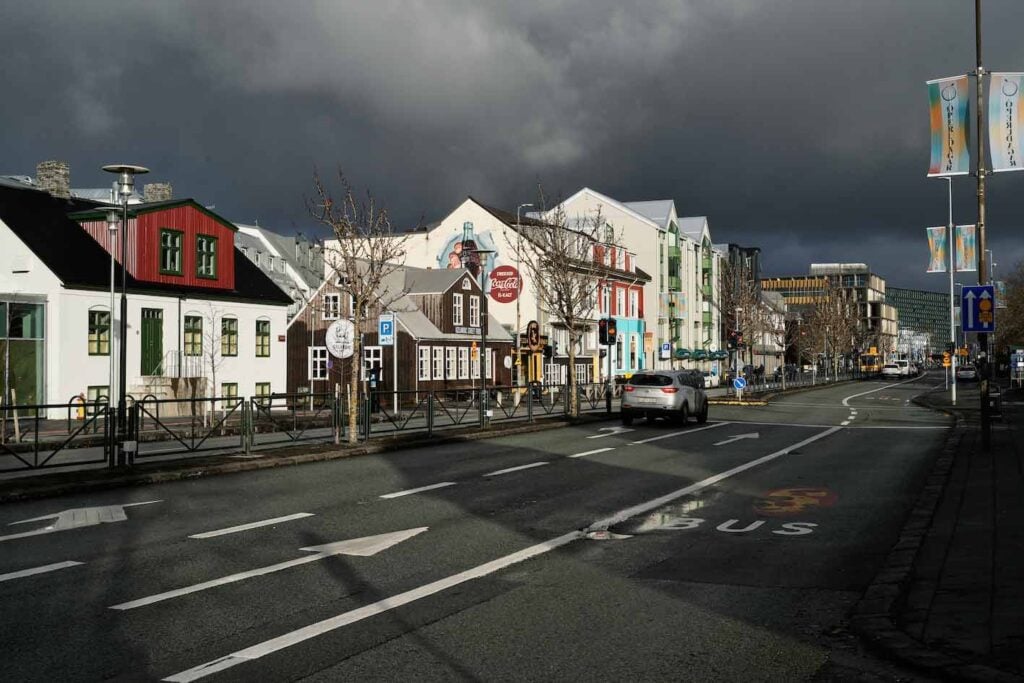
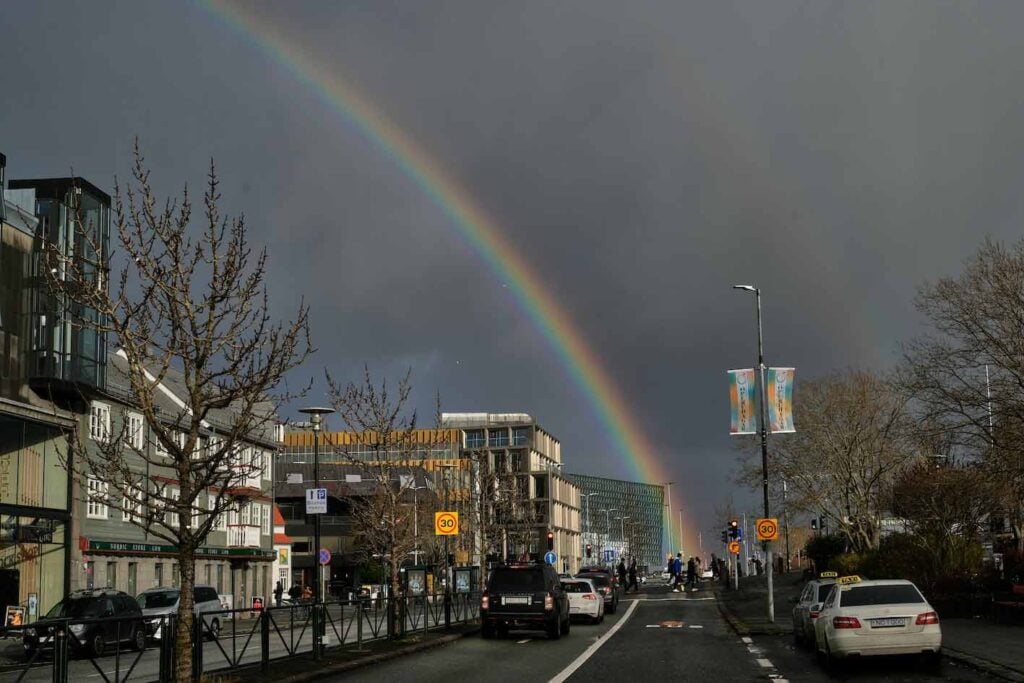
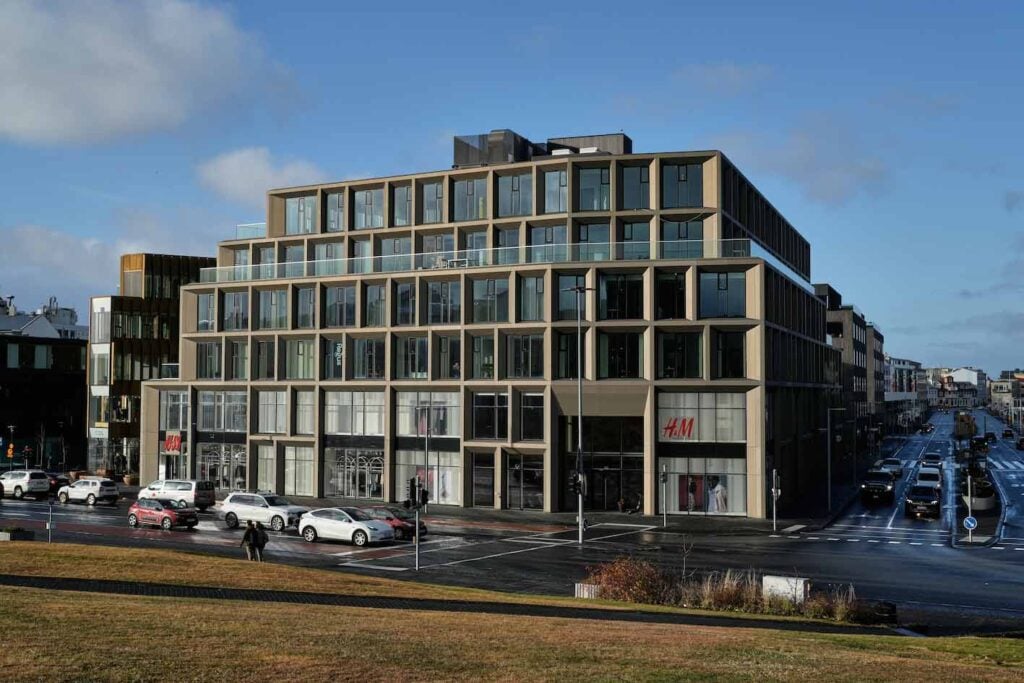
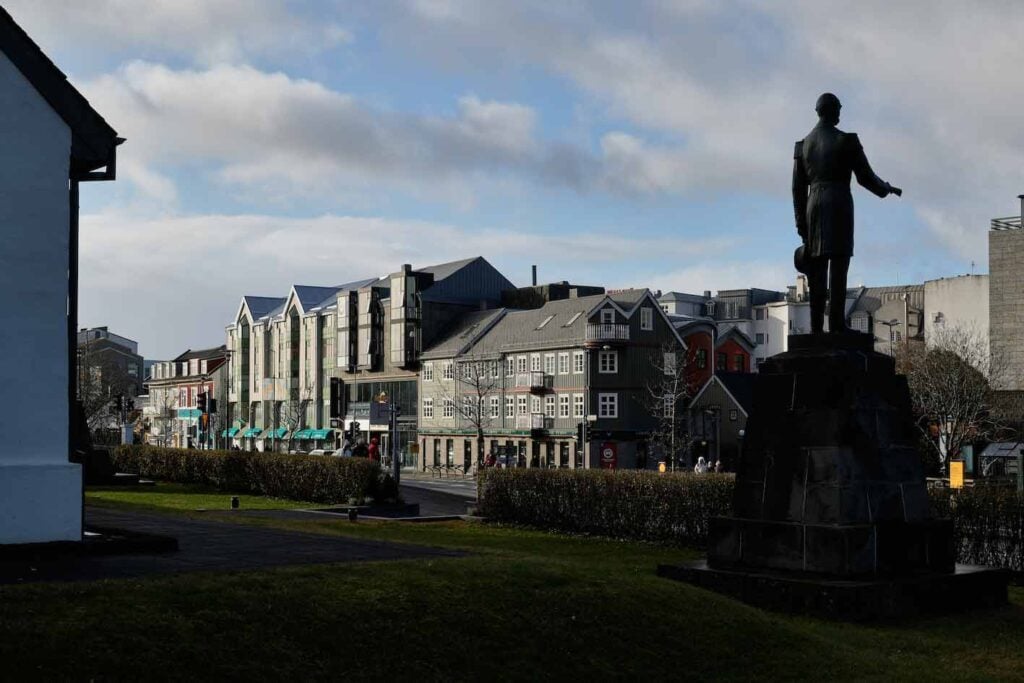
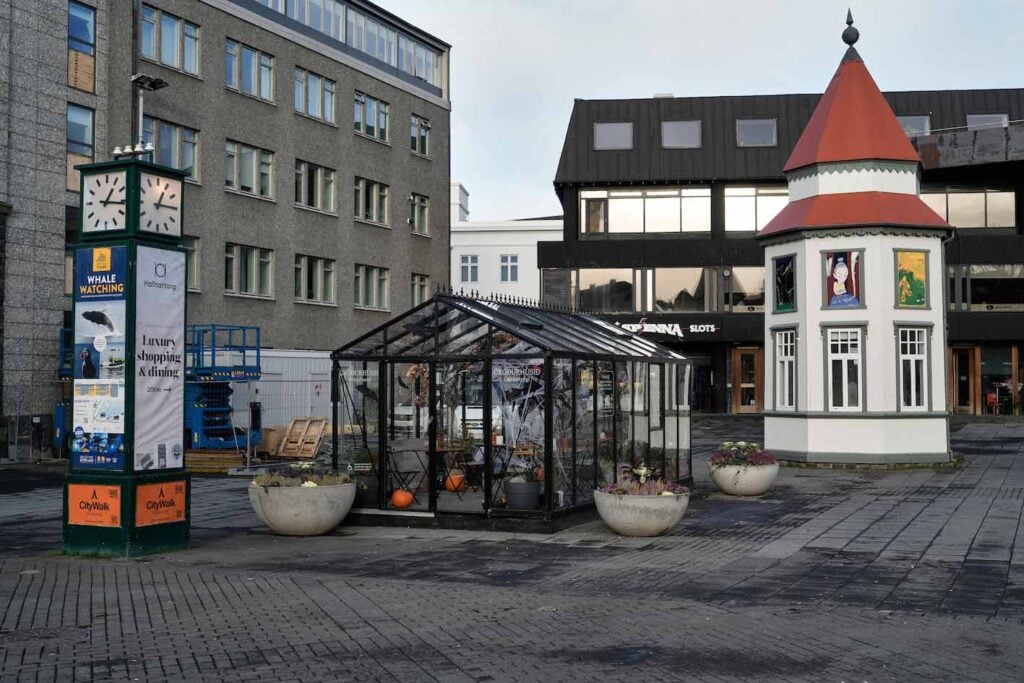
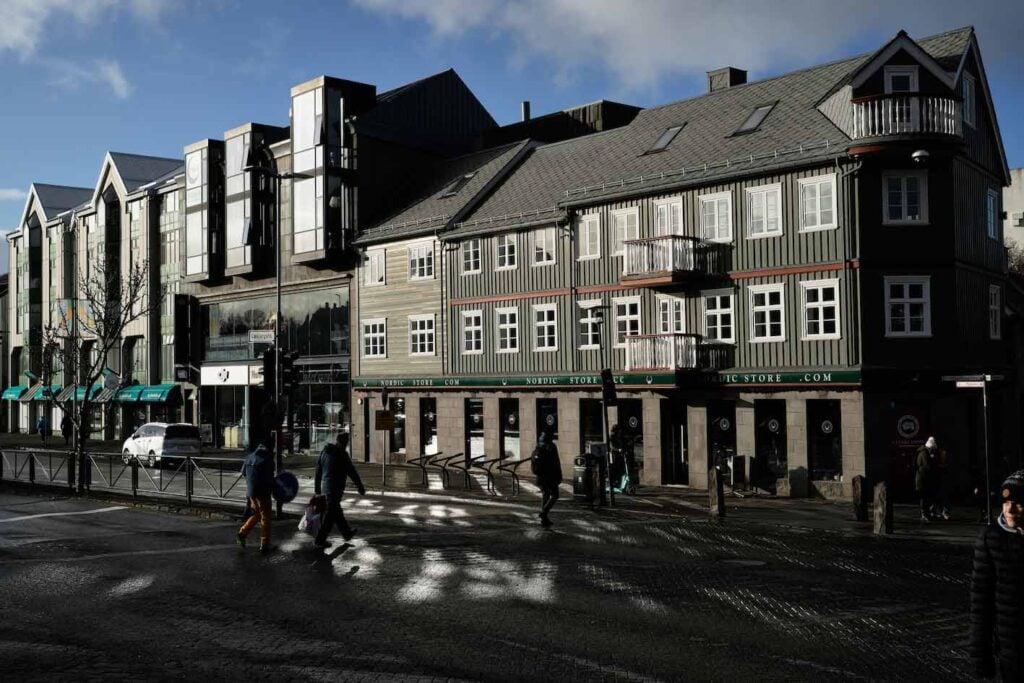
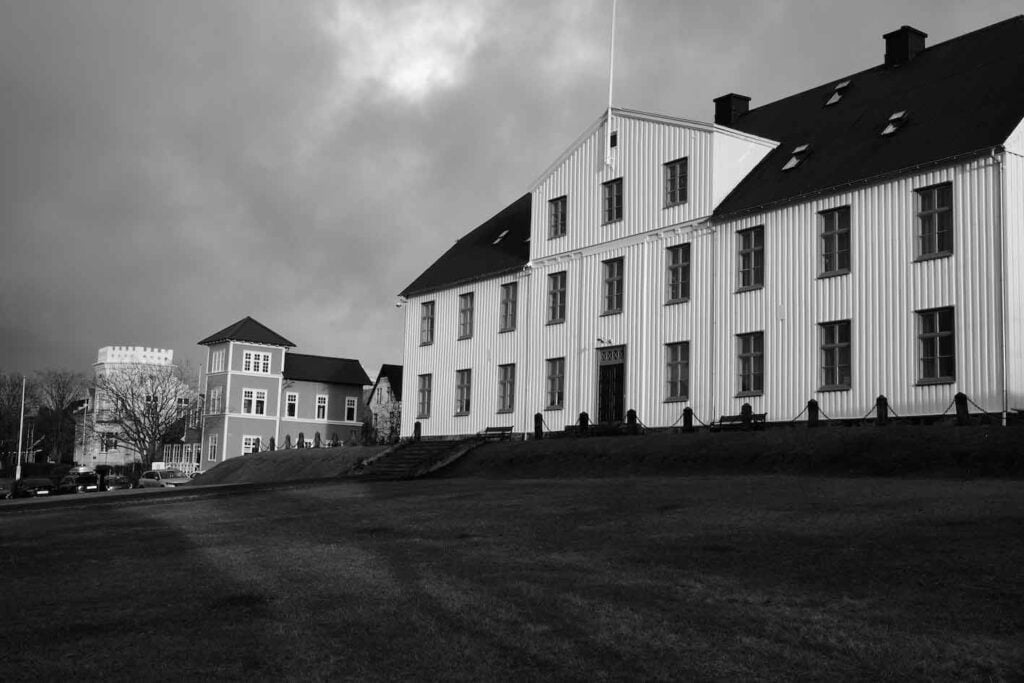
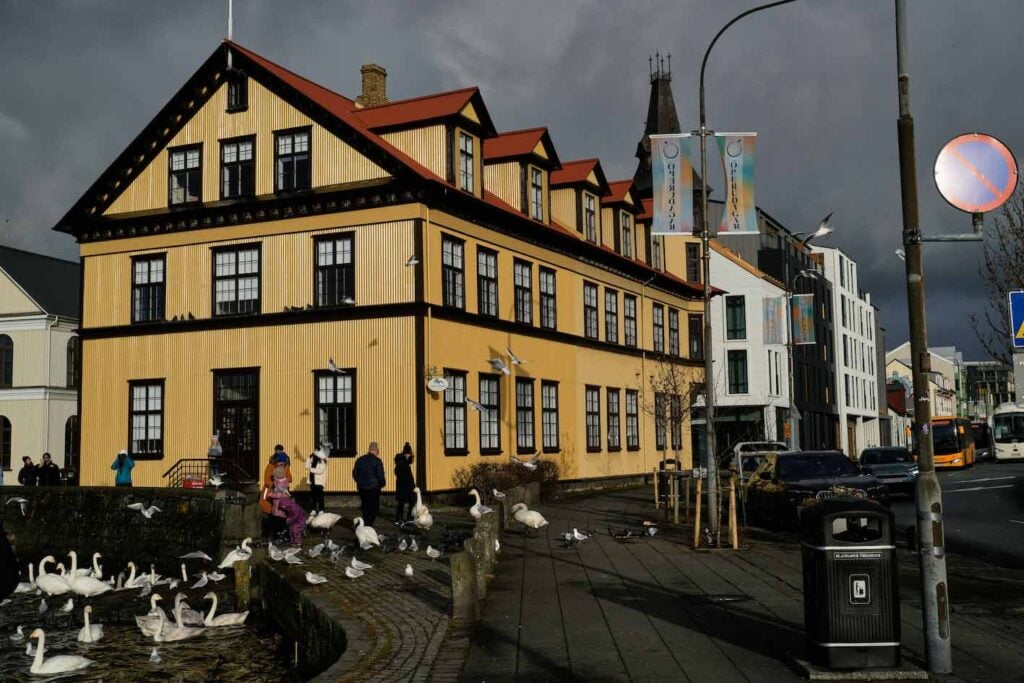
Reykjavík 28/10/2024 : Camera: A7C R – FE 2.4/40mm G
Photos & Text: Páll Stefánsson

